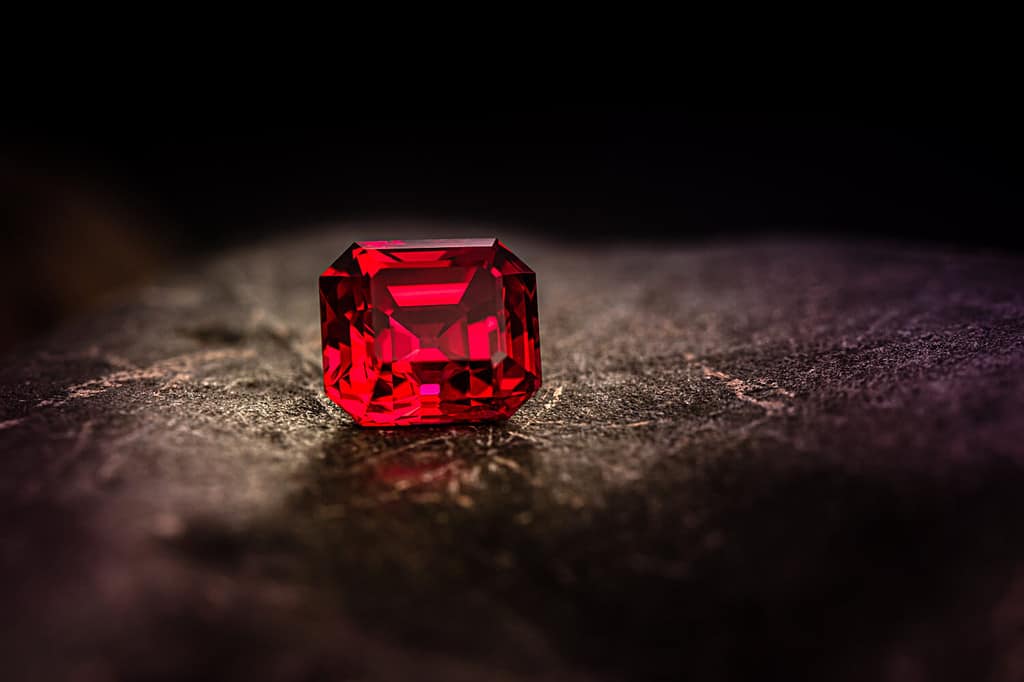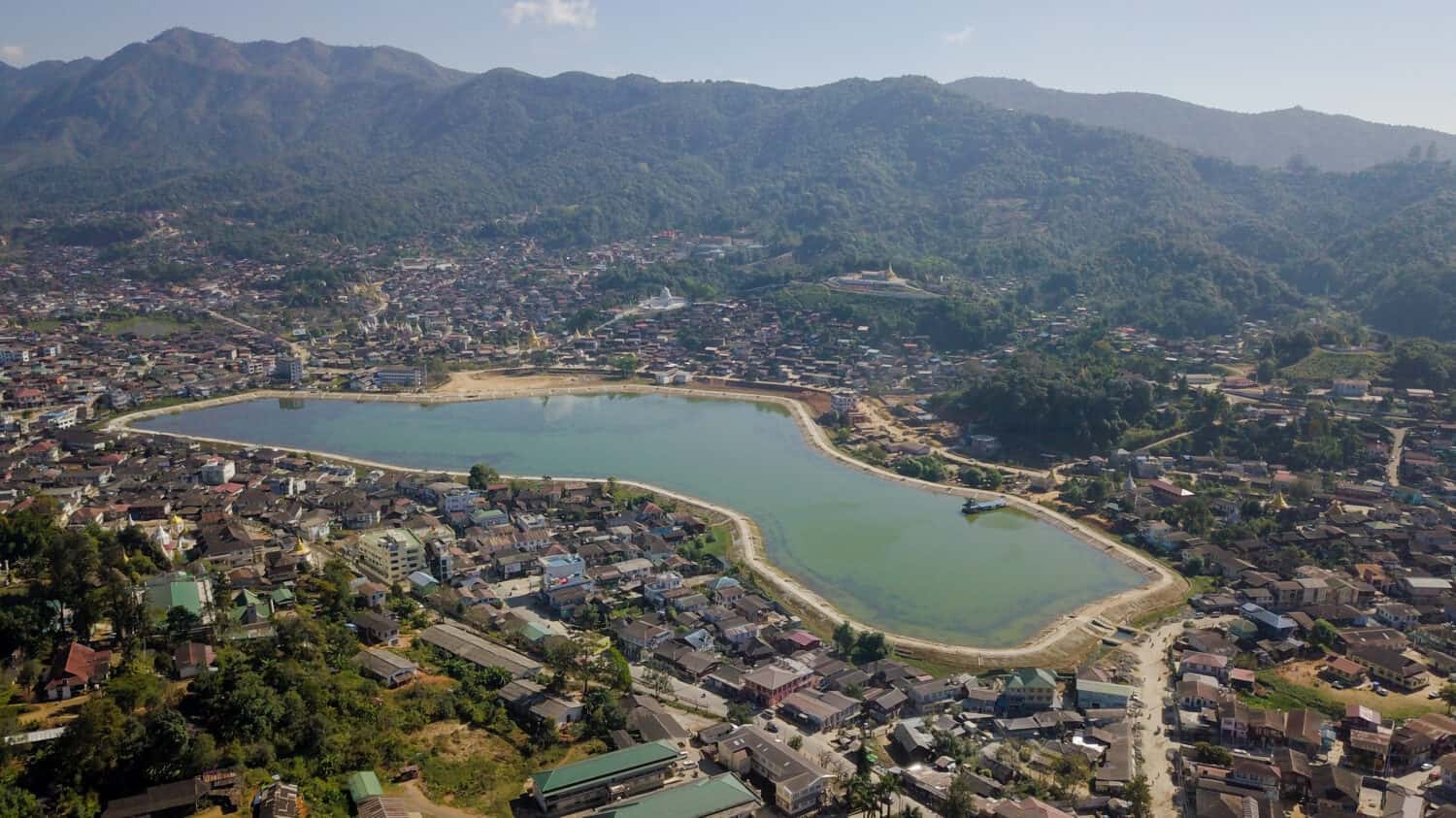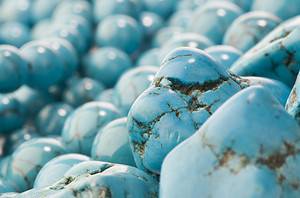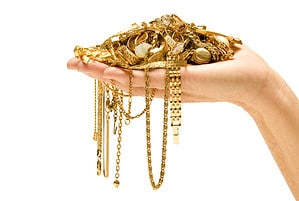
Kyawthuite, the rarest mineral on earth, resembles this orange sapphire.
©Finesell/Shutterstock.com
The International Mineralogical Association recognizes 6,000 minerals, and many of them, such as garnet, are abundant. But the rarest mineral found on earth is kyawthuite. Only one crystal of this mineral has ever been found in a region of Myanmar called Mogok. The crystal is a reddish-orange color, weighs 1.61 carats, or about 0.3 grams, and has a chemical formula of Bi3+Sb5+O4. This means the elements bismuth, antimony, and oxygen make up this mineral. Scientists also found tiny amounts of tantalum. Kyawthuite is, so far, the only bismuth-antimony oxide.
The mineral is monoclinic, which means its crystal system comes in the form of a parallelogram prism. It has a white streak. That means when you scrape it across an unglazed tile, the streak it leaves behind is white. Gemologists use the streak of a mineral to help identify it, for a mineral can have many colors, like sapphire, but the color of its streak remains constant.
Some Characteristics
Kyawthuite is a transparent mineral and has a luster like a diamond. Unlike diamond, which is the hardest substance known, kyawthuite only ranks 5.5 on the Mohs hardness scale. It’s brittle and has a conchoidal fracture. This means that when you break it, the pieces resemble a seashell. It’s also incredibly dense thanks to the bismuth it contains. It is eight times as dense as water and sinks when it’s put in water. Interestingly, people who were looking for sapphires found this mineral in an alluvial stream. However, kyawthuite isn’t related to sapphires, which is a form of corundum that can come in every color but red.
The International Mineralogical Association recognized kyawthuite as a new mineral in 2015, and you can find the faceted gemstone in Los Angeles County’s Natural History Museum. Kyawthuite was named in honor of geologist Dr. Kyaw Thu of Yangon University.

Painite is often mistaken for a ruby like this one.
©Levon Avagyan/Shutterstock.com
The Second Rarest Mineral on Earth
Painite is the second rarest mineral on earth and was found in the same area as kyawthuite. British gem dealer and mineralogist Arthur Pain discovered it in 1952. At first, he mistook the two crystals he had for rubies. This is understandable because not only were the crystals reddish in color, but the area, Mogok, was and is famous for its rubies. In 1954 Pain gave the crystals to the British Museum to investigate them further. When scientists discovered the crystals represented a new type of mineral, they named it after Pain. It took until 1979 until another painite specimen was found, and it took until 2001 before yet another one was unearthed.
Because it’s so rare, painite costs more per carat than even a rare colored diamond. A single carat of a painite specimen can cost from $50,000 to $60,000.
Though it often looks like ruby, painite is not closely related to it. Ruby is the red type of corundum, the second hardest substance on earth. Painite is a borate with the chemical formula CaZrAl9O15(BO3) with just enough vanadium and chromium to give it its reddish color. What makes painite so rare is that two of the elements that make it up, zircon and boron, are rarely found together in nature. Scientists don’t quite know why this is.
At 7.5 to 8 on the Mohs hardness scale, painite is much harder than kyawthuite. It is transparent and sports a glassy, or vitreous luster. It also differs from kyawthuite in that it has a red streak.

This is a view of the town of Mogok, Myanmar.
©Ge-No/Shutterstock.com
Facts About Mogok
Nicknamed “Ruby Land,” Mogok has been famous for the abundance and variety of its gems and minerals since antiquity. Indeed, there’s a myth that three lost hunters founded the town in the 13th century when they found a treasure trove of rubies at the bottom of a mountain and took the gemstones back to their lord. Even now, people seek the rubies of Mogok for the intensity of their color, called “pigeon’s blood,” and their lack of inclusions and flaws.
Besides painite and kyawthuite, Mogok is also famous for its sapphires and semi-precious gems such as garnet, peridot, and spinel. The town is also known for pegmatites, which are igneous rocks that contain crystals. Some of these crystals are gemstones, though pegmatites also contain important elements such as lithium, tin, boron, and uranium.
Geologists believe that the intense heat, pressure, and hot fluids that occurred during the formation of the Himalayan Mountains led to the creation and abundance of the precious and semi-precious gemstones and minerals in Mogok.
The photo featured at the top of this post is © Joe Jirang/Shutterstock.com
Thank you for reading! Have some feedback for us? Contact the AZ Animals editorial team.






